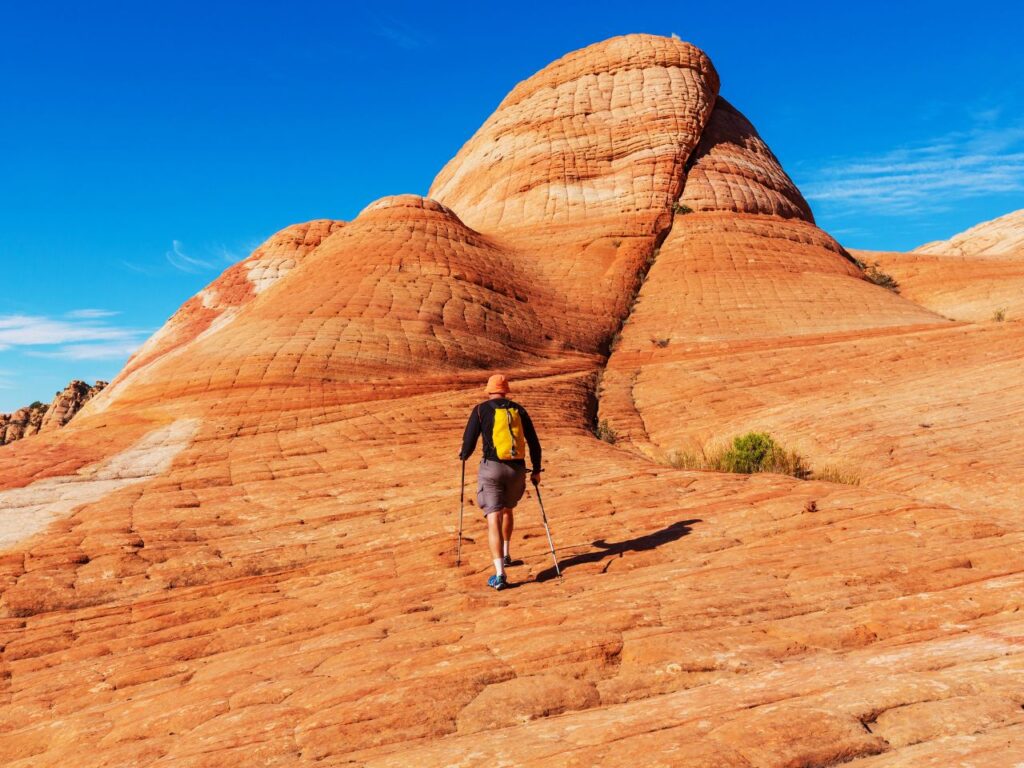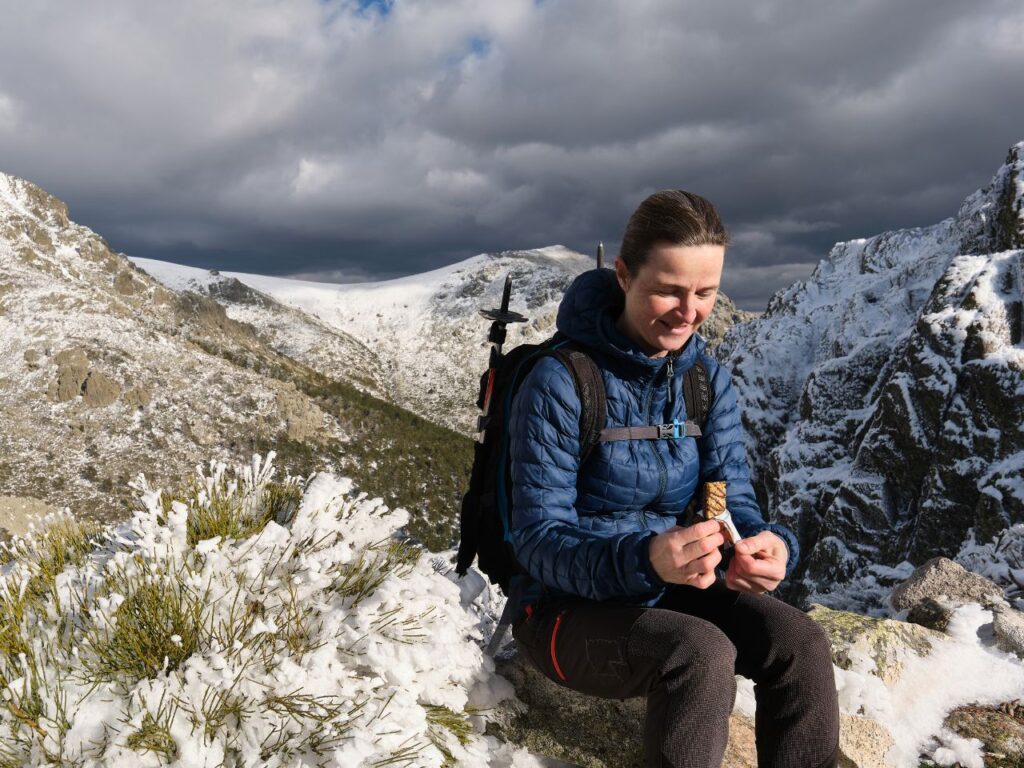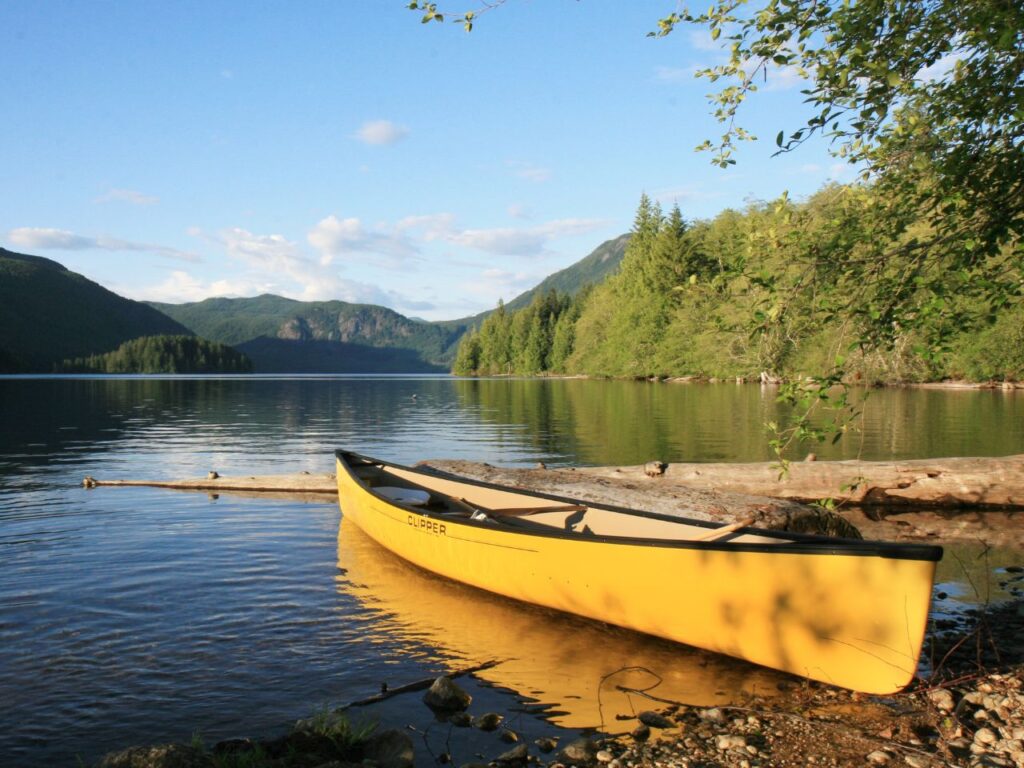
Rock climbing is a physically and mentally demanding sport that will challenge your strength, agility, endurance, balance, and mental control. While indoor rock climbing gyms have rapidly grown in popularity over the past decade, traditional rock climbing on mountain sides has been around for much longer. Climbing a route on a mountain is vastly more dangerous than climbing in a gym and requires a completely different mindset, gear, and preparation. For example, those who prefer climbing mountains often bring sandpaper or a sanding pad to file their hands and fingers. But what for? Why do climbers file their hands?
There are a few reasons why climbers file their hands, but the main reason is to prevent injuries. Suppose you’re an avid climber, you might be scrolling through Instagram or some other social media and come across a gruesome picture of a climber’s hand covered in blood. These injuries are called flappers and are usually caused by calluses or blisters ripping open on the sharp edges that some mountain holds will have. While these injuries are sometimes revered as battle scars by some hard-core climbers, they can make finishing a route or even descending very dangerous and difficult. But these injuries are easily preventable by filing your calluses after each attempt.
As you climb, the rough surface of the mountain will gradually thicken your calluses. Some newbie climbers might think this is a good thing because calluses help protect your hands and give you a better grip. However, if you don’t take care of your calluses, you can find yourself in the same boat as those climbers in the gnarly pictures we discussed. So here are some tips to help you keep your calluses healthy and in check:
- File the skin on your hands
- Moisturize your hands one to two hours before climbing
- Moisturize your hands before bed
- Use the right chalk when you’re climbing
- Wash your hands in cold water after climbing
- Keep your hands out of hot water as much as you can
- Trim your nails
As you continue to read this article, we’ll explain why climbers file their fingers and hands in-depth. Furthermore, we will provide tips to help you keep your calluses healthy and prevent flappers. Finally, we will provide a short guide to help you patch up your hands if you manage to rip your skin or calluses.

Why Do Climbers File their Fingers
Climbers file their hands to prevent injuries and to keep their calluses in check. Calluses form from repeated friction, rubbing, or pressure on your skin. For rock climbers, calluses will gradually develop in between each joint on your fingers and their base. They will form to protect the soft skin underneath while also providing a better grip.
As you can probably tell, calluses are pretty important for climbers. Constantly gripping sharp or jagged edges will cause damage to your skin, and calluses are there to help protect your skin. However, developing calluses as beginner climbers will take some time. You’ll have to deal with pain and some injuries before your calluses start to develop, and even then, it will take some time for them to strengthen and get thick. But one thing you need to do is keep your calluses smooth and in check. This is done by sanding them with fine-grit sandpaper or file.
The goal of filing your calluses is to keep them flat and smooth. In addition, filing your calluses helps prevent rips, tears, and the dreaded flappers. A flapper is a piece of skin that’s partially torn off your hand while you’re rock climbing, exposing the raw skin underneath. Flappers are pretty painful and are mostly caused by calluses being too thick and getting snagged on a hold. They are the injuries we were talking about at the beginning of this article, and they can be pretty gruesome, leading to blood dripping all over your hand.
How Can You Prevent Flappers While Rock Climbing
Flappers are a common occurrence for rock climbers who neglect to take care of their calluses. While they’re not entirely preventable, you can take many steps to drastically reduce the likelihood of experiencing the pain they offer while climbing a route.
- File Your Hands and Fingers After Each Attempt
If you’re climbing your favorite route or challenging yourself on a harder one, your hands and fingers will likely have small rips or tears on your calluses. These little flaps of dangling skin can cause some major damage to your hands when gripping crimp holds or other sharp edges.
With that said, it’s important to sand or file down the little rips and tears to prevent a flapper. You will also have less grip than normal if you don’t file these down. Moreover, filing your hands after each attempt at a climb will help your calluses grow in even layers, which will help you in the long run.
However, this doesn’t really help for those long climbs. If you plan to tackle a long route, you should pay attention to your hands as you climb. If you see a split or tear starting to form while you’re climbing, reach the next anchor or find a way to stall safely and file your calluses.
- Moisturize Your Hands An Hour or Two Before You Climb
Moisturizing your hands is a key part of flapper prevention. By moisturizing your hands an hour or two before you climb, you can ensure your skin is hydrated and elastic by the time you start climbing. Well-hydrated and elastic skin improves your grip while also preventing rips, tears, cracks, and flappers.
There are tons of hand creams out there for climbers, but Climbskin is easily the best. It doesn’t contain any wax, so your hands will not feel greasy after you use it, and it absorbs into your skin extremely fast. Most hand creams for climbers contain a wax that takes forever for your skin to absorb, and they make it very difficult to do everyday things like using your phone, let alone climbing.
- Moisturize Your Hands Before You Go to Bed
Like the previous flapper prevention tip, moisturizing your hands keeps them hydrated and elastic, which is excellent. Hydrating your hands before you climb is essential in our books, but if you want to further reduce your chances of getting a flapper while you climb, you should moisturize your hands at least once or twice a day. The best time to moisturize your hands is when you aren’t going to use them for about 10 minutes, and right before you go to bed is an excellent time to do so.
You should also moisturize your hands after your climb or on days you don’t climb. You can use lotion if you want. However, most lotions are formulated to prevent or help remove calluses. So, if you use lotion, only use a small amount. We also recommend you avoid using lotion and the same hand cream to moisturize your hands before climbing.
- Use the Right Chalk When You Climb
Chalk is an essential tool for all rock climbers. It helps keep your hands dry during a climb and also helps strengthen your grip. It also prevents slipping, which is one of the leading culprits for flappers.
However, every climber is different, and because of this, you can choose from tons of different chalks. Some climbers get really sweaty hands while they climb. As such, they will need to use climbing chalk that has drying agents to keep their grip strong and slip-free. On the other hand, some climbers don’t get sweaty hands and can use finer chalk without drying additives.
In order to find the right chalk for you, you’ll need to experiment with different brands and types of chalk constantly. Each type has its pros and cons that you’ll need to look into and experiment with while you climb. However, once you find the right brand and type of chalk, you’ll be ready to tackle more difficult climbs more confidently.
- Wash Your Hands in Cold Water After You Climb
Washing your hands after your climb is a necessity. Climbing holds are gross. They’re covered in sweat, old chalk, dirt, blood, and grease and can dry out and irritate your skin if left on. Because of this, we advise washing your hands with soap and cold water after you finish climbing for the day. But why use cold water? Well, the next tip will make that clear.
- Minimize the Time Your Hands Spend in Hot Water
This might seem a little strange, but keeping your hands out of hot water will do wonders for your calluses. Hot water will soften your calluses, making them easier to damage and rip, forming flippers. However, keeping your hands free from hot water is nearly impossible. After all, you need to take hot showers to stay clean, and those dishes need to be washed somehow.
This tip is really only for those who are the most dedicated to keeping their calluses perfect. But if you’re keen on keeping your calluses in the best possible shape, then you’ll need to make some changes to your daily life. First off, you should keep your hot showers short and sweet or take cold showers, which come with their own benefits. Second, you should wear rubber gloves when doing other activities that require hot water, like washing your dishes.
- Trim Your Nails
Keeping your nails trimmed doesn’t really help prevent flappers, but it prevents your hands from getting unnecessary damage while climbing. If you don’t trim your nails before climbing, you can easily damage them on your climb by ripping or tearing them, which will cause a lot of pain.
A great way to see if your nails need to be trimmed is to curl your fingers, so they touch the palm where your fingers connect. Then take your other hand and brush your curled finger. If you can feel your nails scratching against your skin, then you should file them down some more. When you trim your nails, make sure you leave a little bit of the grown part because your nails can sting if you cut them too short, which can make climbing uncomfortable.

How to Patch Up a Flapper
As we previously said, flappers are not entirely preventable, even if you’ve taken every precaution possible. With that said, if you’re unlucky during a climb and get a flapper, you should patch it up as soon as possible. Here are the steps you should take:
- Stop Climbing. Do not continue to climb with a flapper if possible. Continuing to climb with one can make the injury worse and is a great way to get the wound infected. While this isn’t always possible for everyone, try your best to find a spot where you can hang from an anchor or find a spot where you can stall.
- Clean the Wound. Once you’re in a safe spot, you’ll need to clean the flapper with some cold water to rinse out any blood or dirt. It’ll help if you have any soap or something to disinfect the wound.
- Press the Flapper Back into Place. After cleaning the wound, try to press the flapper back into place. Doing so will allow your skin to heal easier and protect the raw skin underneath. You can choose to clip the flapper off if the stiff pokes from the callused skin hurt, but we would advise against it.
- Apply a Bandage and an Antibiotic if You Have Some.
- Wrap the Wound and Bandage in Climbing Tape. If you’re still mid-climb or want to continue climbing, then climbing tape is your best friend. The climbing tape will somewhat protect the wound and act as a makeshift bandage if you don’t have one. However, be ready for the pain you will experience when you remove the tape later.
Congratulations, you have successfully patched up your flapper. Once you get home, be sure to clean and disinfect the wound if you weren’t able to during your climb.
Final Thoughts
Flappers are a painful reality for most climbers, and I have yet to meet a climber that has not had at least one, other than those who have not experienced one yet. However, filing your calluses is one of the key components of flapper prevention. With that said, if you’re new to climbing and don’t have a skin file, now is the time to start shopping.




